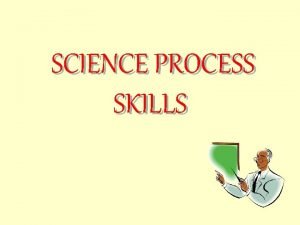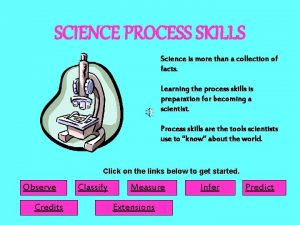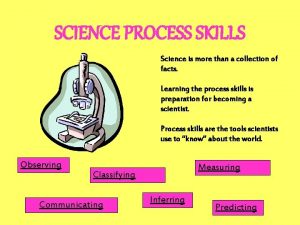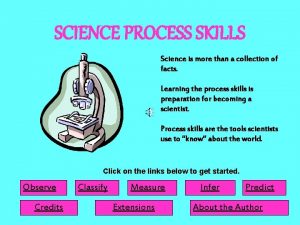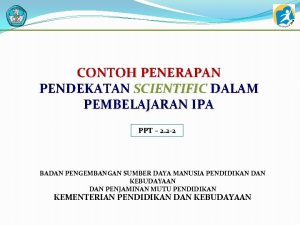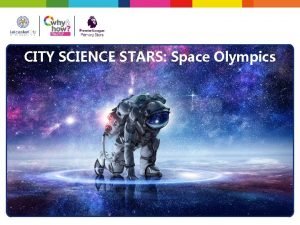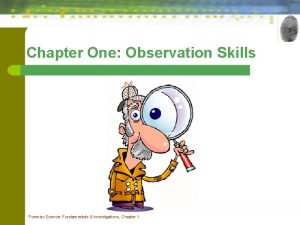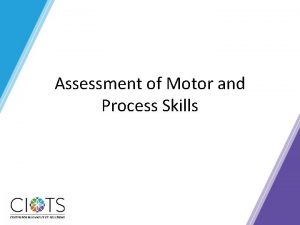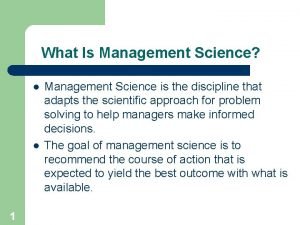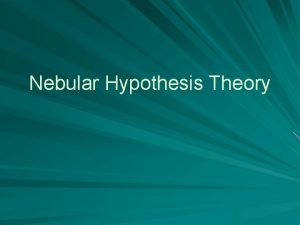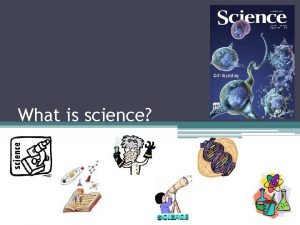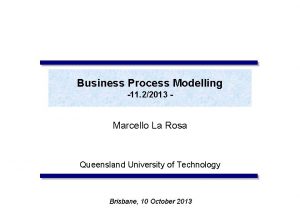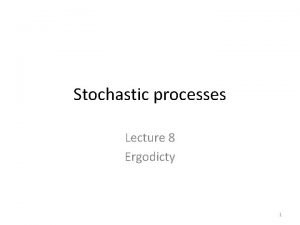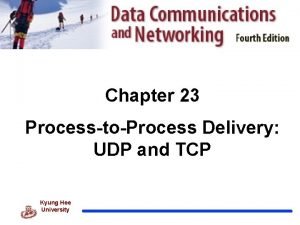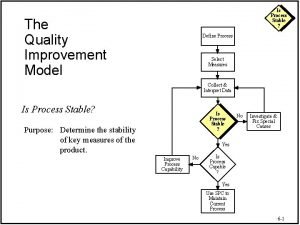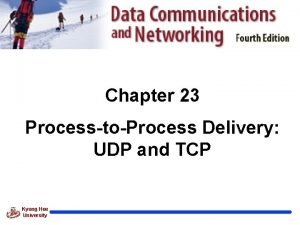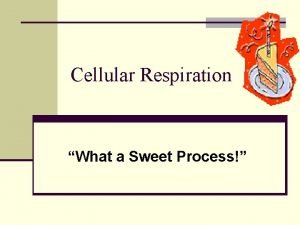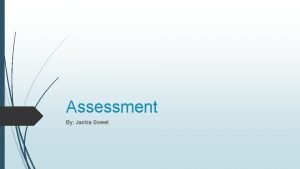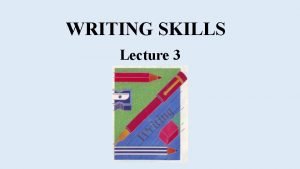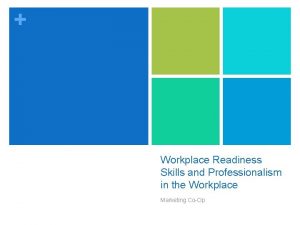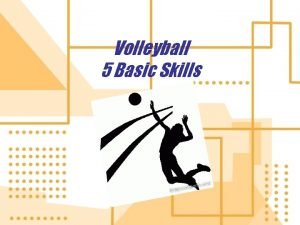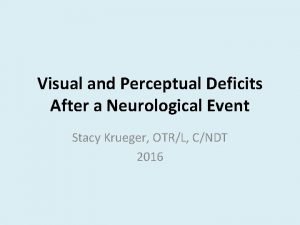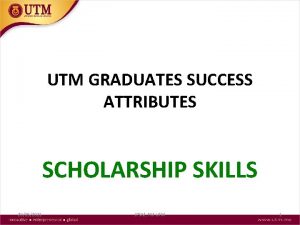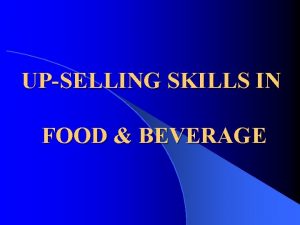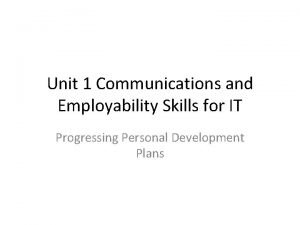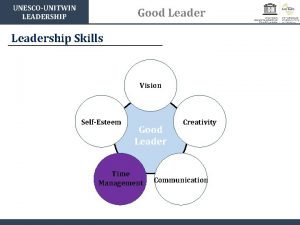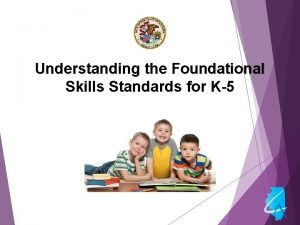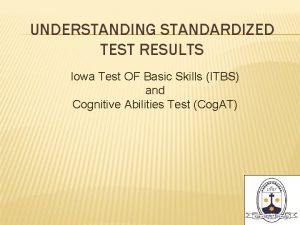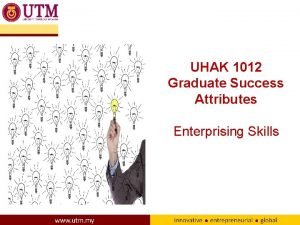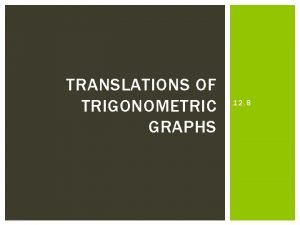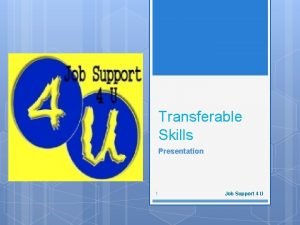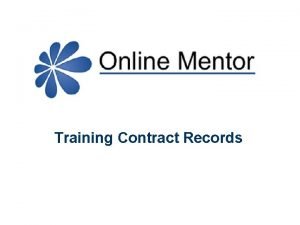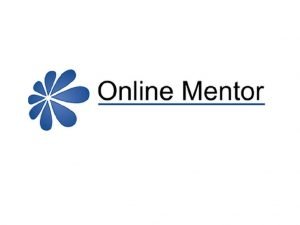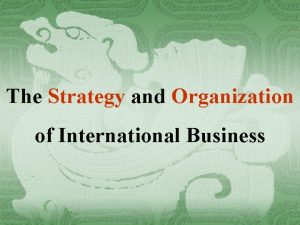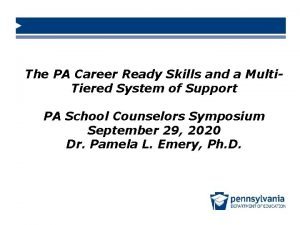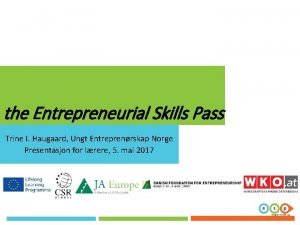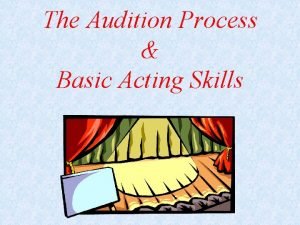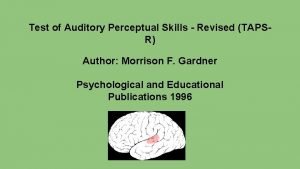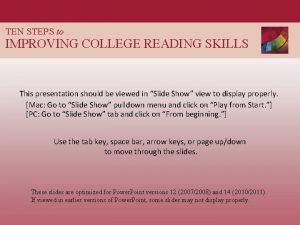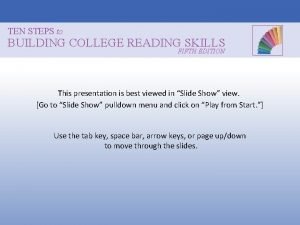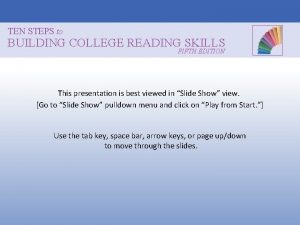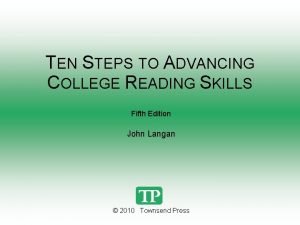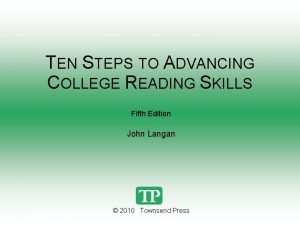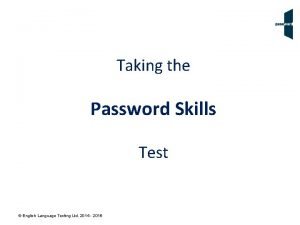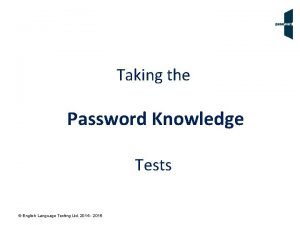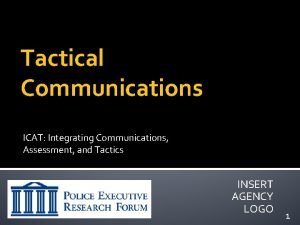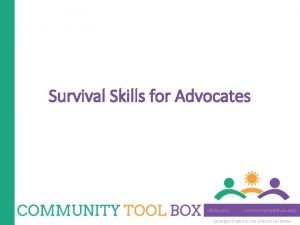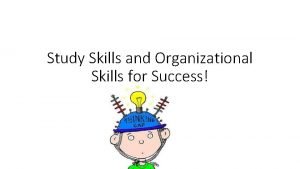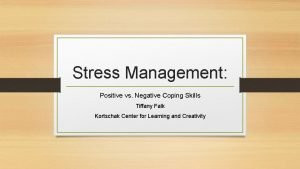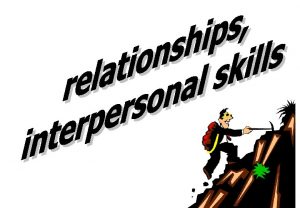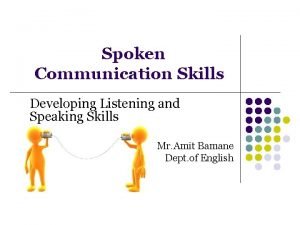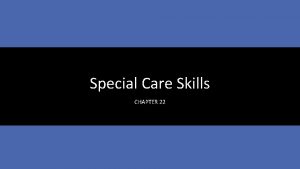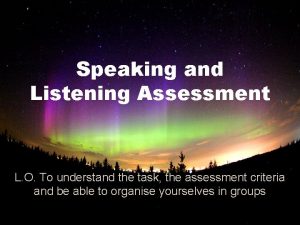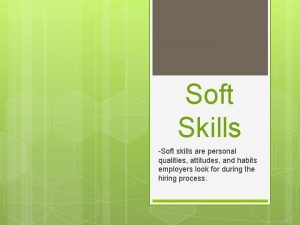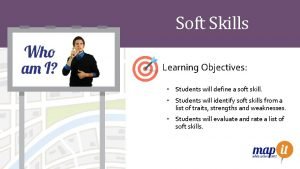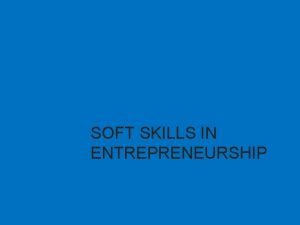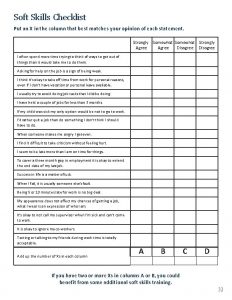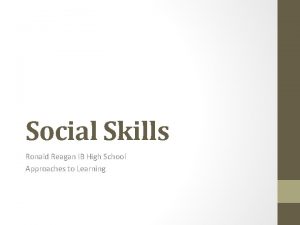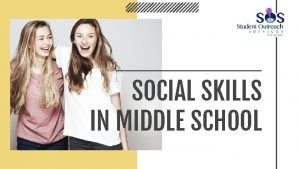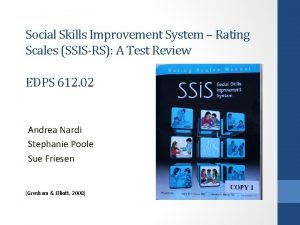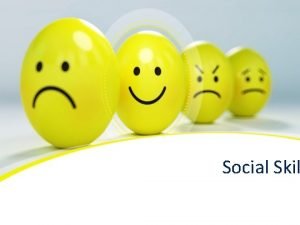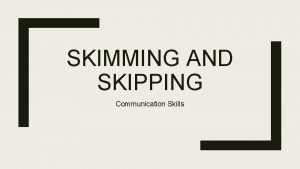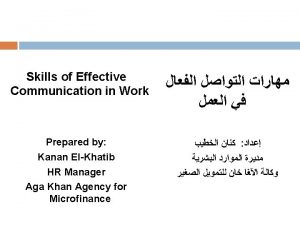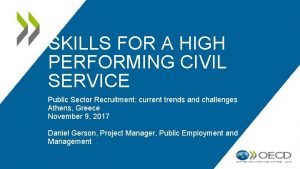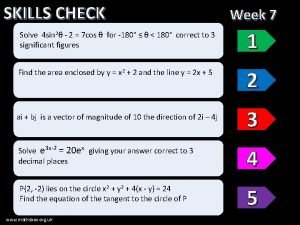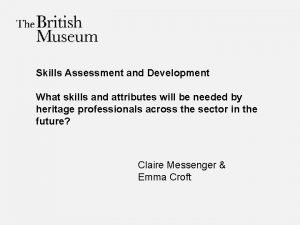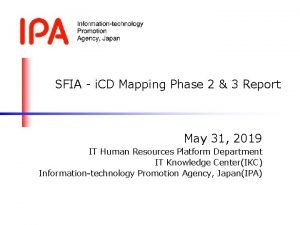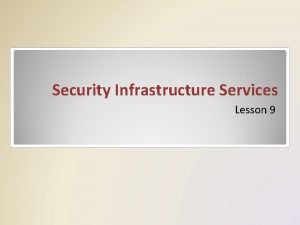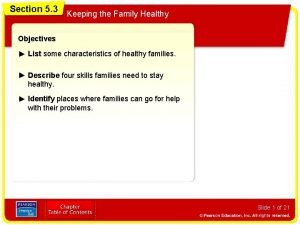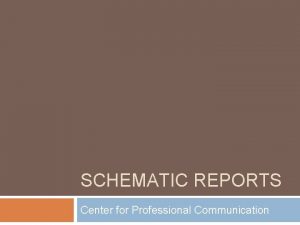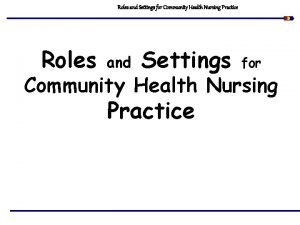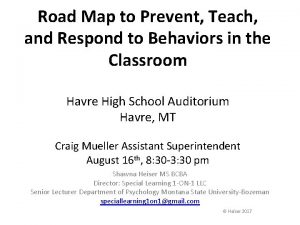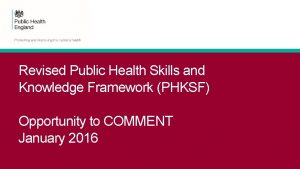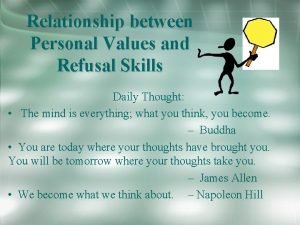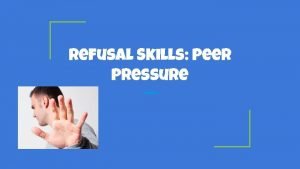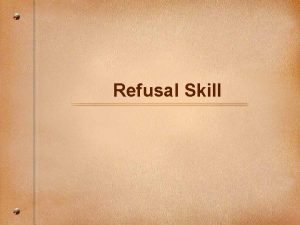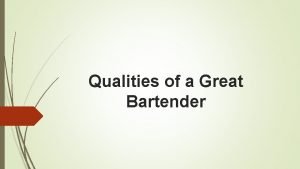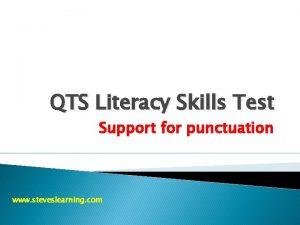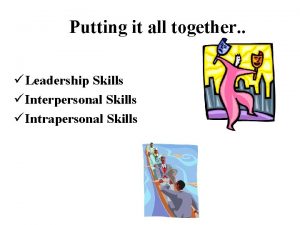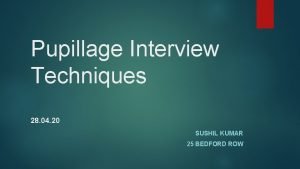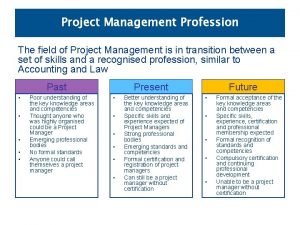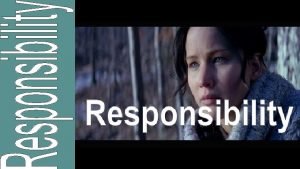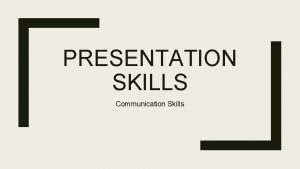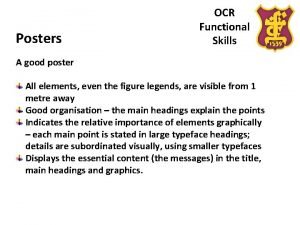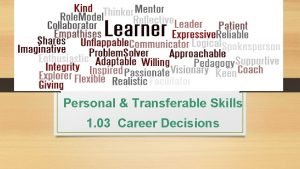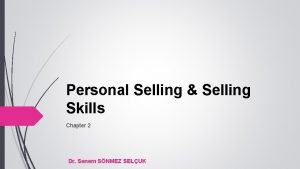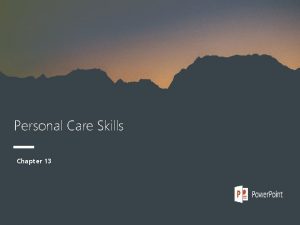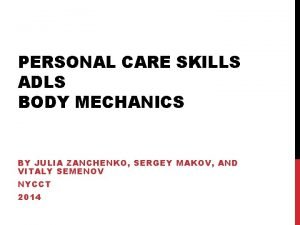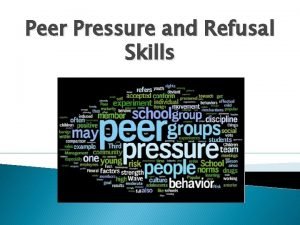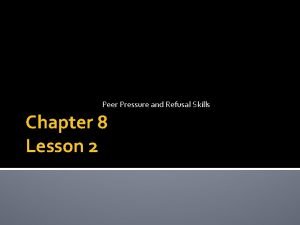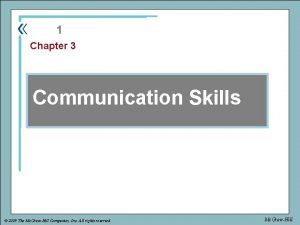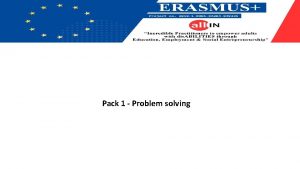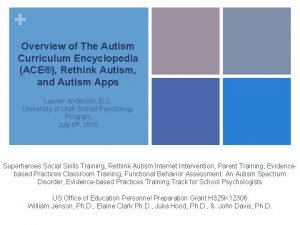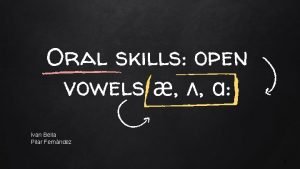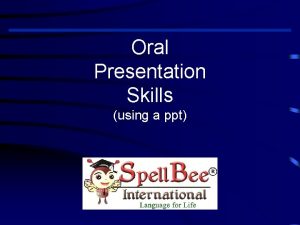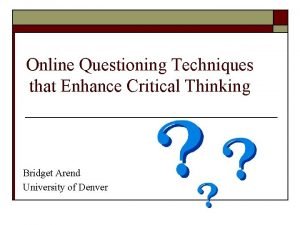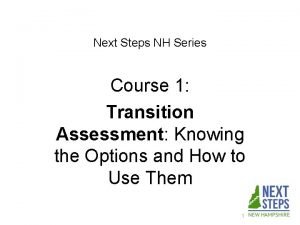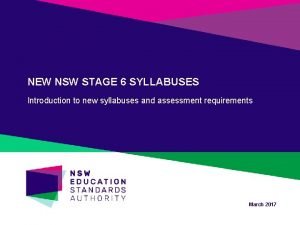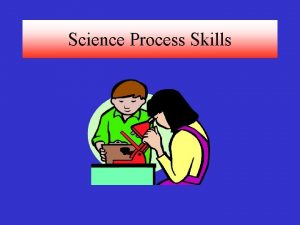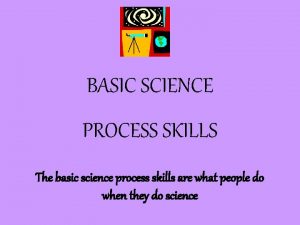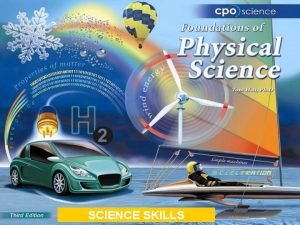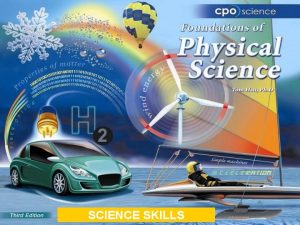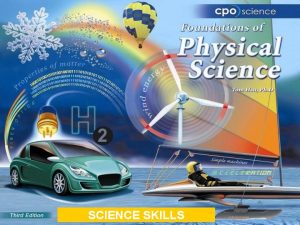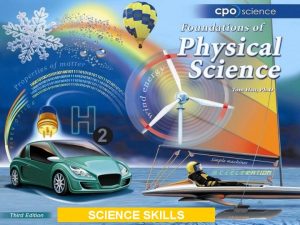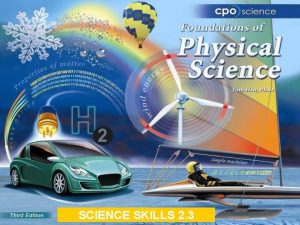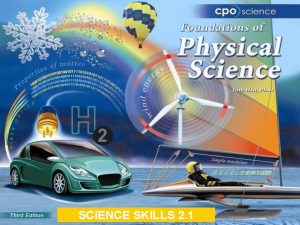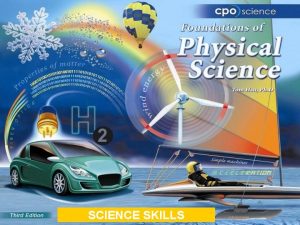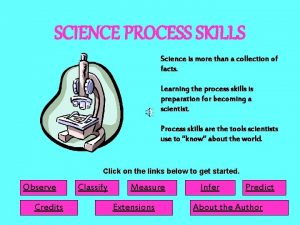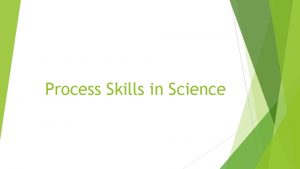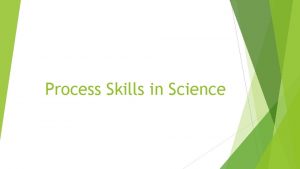SCIENCE PROCESS SKILLS What is science process skills






























































































































- Slides: 126

SCIENCE PROCESS SKILLS

What is science process skills? n How a scientist works, thinks and studies problem. (friedl 1995)

What is sps? A way of investigation that involves specific skills which require the following steps: ~ planning course of actions. ~ carrying out activities. ~ collecting data. ~ organising & interpreting data. ~ reaching a conclusion.

BASIC SCIENCE PROCESS SKILLS. n n n OBSERVING CLASSIFYING MEASURING AND USING NUMBERS MAKING INFERENCES PREDICTING. COMMUNICATING. CONTROLLING VARIABLES MAKING HYPOTHESES. USING SPACE-TIME RELATIONSHIP INTERTING DATA DEFINING OPERATIONALLY EXPERIMENTING



WHAT IS MEANT BY OBSERVING? n n n Observing involves collecting information about objects or phenomenon by using the five senses. -sight -hearing -touch -taste -smell

What are the characteristic of objects and phenomenon that we are observing? n n n n Picture. Photograph Video presentation Audio recording Real life thing or condition Real object or 3 D model Life or preservation specimen

Why do we need to observe? n To compile / gather as much information as possible about objects or phenomena.

How do we observe? n n n ~Focus on the objects or phenomena to be studied. ~Identify the characteristics. ~Compare the objects or phenomena. ~Identify changes & sequence of events. ~Use appropriate apparatus for more detailed observations.

You are observing when you are …

1. Using the five senses effectively.

Using the five senses effectively.

2. Identifying relevant particulars of an objects and its environment.

Identifying relevant particulars of an objects and its environment.

Focusing on relevant particulars from massive information.

3. Focusing on relevant particulars from massive information.

4. Identifying similarities and differences.

4. Identifying similarities and differences.

5. Identifying strange / unusual features.

Identifying strange / unusual features.

6. Realizing changes in environment.

Realizing changes in environment.

Identifying the correct sequence.

7. Identifying the correct sequence.

8. Using appropriate instrument(s) to enhance senses for the details. MICROSCOPE STETHOSCO PE


What is meant by classifying? n Classifying is a process of grouping objects according to certain characteristic for a purpose.

When do we need to classify? n. When there are: ~ many items or information. ~ items or information are not organised

How do we classify? n Identify the general characteristics of the items. n Sort out items of the same characteristics into their respective groups. n Identify other characteristics. n Repeat steps 1 -3 until there is only one item in each group.

You are classifying when you are….

You are classifying when you are…. 1. Detecting similarities. 2. Grouping objects based on certain criterion. 3. Using other criterion in grouping objects. 4. Grouping objects in different ways.

Classify

1. Detecting similarities. Same shape Same Colour

2. Grouping objects based on certain criterion. . .

3. Using other criterion in grouping objects. . .

4. Grouping objects in different ways. . .

CLASSIFYING

Grouping objects based on certain criterion.

Using other criterion in grouping objects.

Grouping objects in different ways.


What is meant by measuring and using numbers? n Measuring and using numbers is a process of observing quantitatively using numbers and standard or standardised measuring tool as the reference unit.

Why do we need to measure and use numbers? n To obtain more accurate observations.

How do we measure and use numbers? n n Identify the measurement required. Specify the instrument to be used. Compare the measurement with the specific instyrument. Add up the total measurement.

You are measuring and using numbers when you are….

1. Able to count and compare quantity of items in different groups.

Able to count and compare quantity of items in different groups.

1. Able to count and compare quantity of items in different groups.

Able to count and compare quantity of items in different groups.

Able to recognized the pattern from a table of numbers.

2. Able to recognized the pattern from a table of numbers.

3. Using numbers to record phenomenon. 0 = STOP 1 = SLOW 2 = FAST 3 = FASTEST

Using numbers to record phenomenon. 1 = SLOW 2 = FAST 3 = FASTER 4 = FASTEST

3. Using numbers to record phenomenon.

4. Using scales and explaining ratios.

5. Compare objects using numbers. 24, Putra Road, 26, Putra Road, Kota Kinabalu, Sabah

5. Compare objects using numbers.

6. Using tools correctly.

7. Recording unit correctly.

8. Choosing and using standard unit.

Comparing time, distance, area and volume with relevant units.

10. Determining the accuracy in measurements. Which is more accurate?


What is meant by making inferences? • Making inferences is a process of making early conclusions by relating previous experiences with immediate observations.

Why do we need to infer? • 1. To plan actions or to make a choice. • 2. To analyse the cause of effect of decisions.

How do we infer? • Observe the situations or circumstances. • State the reason why the situation or circumstances happens. • Give reason to your statement(s). • Check if the reasons given are based on the opinions or observations from the situations. If based on opinions, state why.

You are making inferences when you are……………. .

1. Using information from observations to make reasonable early conclusions.

2. Making various possible interpretations from single observation.

3. Able to identify the limitations of inferences.

4. Testing the accuracy of inferences through additional observations.

5. Using inferences as a tool to determine the appropriate additional observations.

1. Using information from observations to make reasonable early conclusions.

Making various possible interpretations from single observation.

Able to identify the limitations of inferences.

Testing the accuracy of inferences through additional observations.

Using inferences as a tool to determine the appropriate additional observations.


What is meant by predicting? • Predicting is a process of forecasting events based on observations and previous experiences or certain pattern of reliable data.

Why do we need to predict? • When accuracy is not essential in : • ~reducing the number of choice. • ~planning. • ~considering choices.

How do we predict? • Observe to gather data. • Identify the pattern of the data. • Based on the pattern or past experiences, make suitable predictions.

You are predicting when you are…. 1. Using previous or present evidence to state incoming events. 2. Able to differentiate between prediction and guessing. 3. Able to determine the outcomes from an action. 4. Using pattern of data explicitly to make projections.

You are predicting when you are…. 7. Being cautious in making assumption about a certain pattern of data beyond the evidence at hand. 8. Extrapolating and inserting data as a tool to predict.

Using pattern of data explicitly to make projections.

Extrapolating and inserting data as a tool to predict.


What is meant by communicating? n Communicating is a process of receiving. spreading and sharing of information and ideas.

Why do we need to communicate? n To spread ideas or information. n To share idea or information.

How do we communicate? n n Record information obtained from various resources. Translate the information into other forms such as charts, graphs and table. Spread the information through various means and way.

You are communicating when you are…. 1. Speaking, listening or writing to express ideas or meanings. 2. Recording information from investigations. 3. Drawing and making notes. 4. Using and explaining the meaning of symbols.

You are communicating when you are…. 5. Using charts, graphs and tables to present information. 6. Posting questions clearly. 7. Using references. 8. Writing experiment report to enable others to repeat the experiment.

Drawing and making notes. It is yellow in colour, tastes sour, rectangular in shape


Control variables Volume of water Size of salt Rate of stir Temperature of water

Identify variables in an investigation (manipulated and responding variables) Volume of water Size of salt Rate of stir Temperature of water

Identify fixed variables Volume of water Size of salt Rate of stir Temperature of water


Suggest suitable explanations in line with the evidence at hand Quantity of sugar Time taken to dissolve 5 spoons 10 min 3 spoons 5 min 1 spoon 2 min

Suggest suitable explanations in line with the principles and concepts of science. Quantity of sugar Time taken to dissolve 5 spoons 10 min 3 spoons 5 min 1 spoon 2 min

Using previous knowledge to make explanations Quantity of sugar Time taken to dissolve 5 spoons 10 min 3 spoons 5 min 1 spoon 2 min

Aware that there are more than one explanation for events. Aware that the explanation is just a suggestion.

THE RELATIONSHIP BETWEEN SCIENCE PROCESS SKILLS AND THINKING SKILLS. n SCIENCE PROCESSn THINKING SKILLS -CHARACTERIZE OBSERVING -TO COMPARE -TO RELATE

THE RELATIONSHIP BETWEEN SCIENCE PROCESS SKILLS AND THINKING SKILLS. -CHARACTERIZE n CLASSIFY - TO COMPARE AND TO CONTRAST - TO COLLECT AND CLASSIFY

THE RELATIONSHIP BETWEEN SCIENCE PROCESS SKILLS AND THINKING SKILLS. n MEASURING AND USING NUMBERS - TO RELATE -TO COMPARE AND TO CONTRAST

THE RELATIONSHIP BETWEEN SCIENCE PROCESS SKILLS AND THINKING SKILLS. - TO RELATE n MAKING INFERENCES - TO COMPARE AND TO CONTRAST - TO ANALYZE - INFERRING

THE RELATIONSHIP BETWEEN SCIENCE PROCESS SKILLS AND THINKING SKILLS. - TO RELATE PREDICTING - MENTAL IMAGE

Thank You.


You are observing when you are… 1. Using the five senses effectively. 2. Identifying relevant particulars of an objects and its environment. 3. Focusing on relevant particulars from massive information. 4. Identifying similarities and differences.

You are observing when you are… 5. Identifying strange / unusual features. 6. Realizing changes in environment. 7. Identifying the correct sequence. 8. Using appropriate instrument(s) to enhance senses for the details.

You are measuring and using numbers when you are…. 1. Able to count and compare quantity of items in different groups. 2. Able to recognized the pattern from a table of numbers. 3. Using numbers to record phenomenon. 4. Using scales and explaining ratios. 5. Compare objects using numbers.

You are measuring and using numbers when you are…. 6. Using tools correctly. 7. Recording unit correctly. 8. Choosing and using standard unit. 9. Comparing time, distance, area and volume with relevant units. 10. Determining the accuracy in measurements.

You are making inferences when you are…. 1. Using information from observations to make reasonable early conclusions. 2. Making various possible interpretations from single observation. 3. Able to identify the limitations of inferences.

You are making inferences when you are…. 4. Testing the accuracy of inferences through additional observations. 5. Using inferences as a tool to determine the appropriate additional observations. 6. Determining the accuracy in measurements.

You are predicting when you are…. 5. Confident with the accuracy of the prediction. 6. Able to verify a statement of related to future events based on evidence or past experiences.

MODULE OF BASIC SCIENCE PROCESS SKILLS

MODULE OF BASIC SCIENCE PROCESS SKILLS

9. Comparing time, distance, area and volume with relevant units.

You are making inferences when you are ….

MODULE OF BASIC SCIENCE PROCESS SKILLS

You are predicting when you are…. 1. Using previous or present evidence to state incoming events. 2. Able to differentiate between prediction and guessing. 3. Able to determine the outcomes from an action. 4. Using pattern of data explicitly to make projections.

You are predicting when you are…. 5. Confident with the accuracy of the prediction. 6. Able to verify a statement of related to future events based on evidence or past experiences.

You are predicting when you are…. 7. Being cautious in making assumption about a certain pattern of data beyond the evidence at hand. 8. Extrapolating and inserting data as a tool to predict.

You are communicating when you are…. 1. Speaking, listening or writing to express ideas or meanings. 2. Recording information from investigations. 3. Drawing and making notes. 4. Using and explaining the meaning of symbols.

You are communicating when you are…. 5. Using charts, graphs and tables to present information. 6. Posting questions clearly. 7. Using references. 8. Writing experiment report to enable others to repeat the experiment.
 Processing skills in science
Processing skills in science Classifying science process skills
Classifying science process skills Paragraph on scientist
Paragraph on scientist Science process skills communicating
Science process skills communicating Predicting science process skills
Predicting science process skills Pembelajaran inovatif ppt
Pembelajaran inovatif ppt Paragraph on my favourite subject science
Paragraph on my favourite subject science Intra-personal skills
Intra-personal skills Sof skill
Sof skill Skills passport
Skills passport Science skills olympics
Science skills olympics Observation skills forensic science
Observation skills forensic science Assessment motor and process skills
Assessment motor and process skills Social science vs natural science
Social science vs natural science Branches of science diagram
Branches of science diagram Natural science vs physical science
Natural science vs physical science Applied science vs pure science
Applied science vs pure science Anthropology vs sociology
Anthropology vs sociology K5 think central
K5 think central Rule of 70 population growth
Rule of 70 population growth Julie lundquist
Julie lundquist Hard and soft science
Hard and soft science Management science process
Management science process Nebular hypothesis examples
Nebular hypothesis examples Science is a process of thinking
Science is a process of thinking Os coxae
Os coxae Procedural due process vs substantive due process
Procedural due process vs substantive due process Business process levels
Business process levels Autocorrelation function properties
Autocorrelation function properties What is process to process delivery
What is process to process delivery Condylar and coronoid process of mandible
Condylar and coronoid process of mandible Stable quality
Stable quality Process-to-process delivery
Process-to-process delivery Sweet process vs process street
Sweet process vs process street Sweet evaluation
Sweet evaluation Principles for teaching writing
Principles for teaching writing Workplace readiness skills-positive work ethics
Workplace readiness skills-positive work ethics Interpersonal skills wiki
Interpersonal skills wiki Basic skills of volleyball
Basic skills of volleyball Unilateral neglect
Unilateral neglect Graduate attributes utm
Graduate attributes utm Upselling skills
Upselling skills Lesson 2 - banking skills
Lesson 2 - banking skills Unit 1 communication and employability skills for it
Unit 1 communication and employability skills for it Skills to be a good leader
Skills to be a good leader Foundational skills definition
Foundational skills definition Iowa test of basic skills
Iowa test of basic skills Difference between an entrepreneur and a manager
Difference between an entrepreneur and a manager 12-8 practice translations of trigonometric graphs
12-8 practice translations of trigonometric graphs Transferable skills presentation
Transferable skills presentation Sra training record skills
Sra training record skills Sra training records
Sra training records International business strategy
International business strategy Pa career ready skills
Pa career ready skills Soft skills conclusion
Soft skills conclusion Entrepreneurial skills pass
Entrepreneurial skills pass Basic acting skills
Basic acting skills What is testing listening
What is testing listening Tapsr
Tapsr 10 steps to improving college reading skills
10 steps to improving college reading skills Ten steps to building college reading skills
Ten steps to building college reading skills Ten steps to building college reading skills
Ten steps to building college reading skills Ten step to advanced reading answers
Ten step to advanced reading answers Ten steps to advancing college reading skills
Ten steps to advancing college reading skills Password english test sample
Password english test sample Test english
Test english Tactical communication board questions
Tactical communication board questions Integrating communications assessment and tactics
Integrating communications assessment and tactics Survival skills for advocates
Survival skills for advocates Cornell skills for success
Cornell skills for success Define coping skills
Define coping skills Life skill management
Life skill management It is the spoken communication
It is the spoken communication Special care skills chapter 22
Special care skills chapter 22 Success criteria for speaking
Success criteria for speaking A cluster of skills refer to
A cluster of skills refer to Attitude soft skills
Attitude soft skills Soft skills objectives
Soft skills objectives Soft skills entrepreneurship
Soft skills entrepreneurship Soft skills checklist
Soft skills checklist Social skills training for aspergers
Social skills training for aspergers Social skills ib
Social skills ib Social skills definition
Social skills definition Social skills improvement system
Social skills improvement system Social skills examples
Social skills examples Skimming
Skimming Download communication skills | مهارات التواصل
Download communication skills | مهارات التواصل Ska skills knowledge attitude
Ska skills knowledge attitude Skills for a high performing civil service
Skills for a high performing civil service Skills check mathsbox answers
Skills check mathsbox answers What are personal skills
What are personal skills Sfia mapping
Sfia mapping It infrastructure skills matrix
It infrastructure skills matrix Identify four skills that families need to stay healthy.
Identify four skills that families need to stay healthy. Schematic report meaning
Schematic report meaning List of community roles
List of community roles Splinter skills
Splinter skills Public health skills and knowledge framework
Public health skills and knowledge framework How can using refusal skills help you to avoid stress
How can using refusal skills help you to avoid stress Define peer pressure
Define peer pressure Refusal skill?
Refusal skill? Paraverbal communication example
Paraverbal communication example Stages of reading skills
Stages of reading skills What personality traits do bartenders have
What personality traits do bartenders have Literacy skills test
Literacy skills test Intrapersonal skills
Intrapersonal skills Sushil kumar interview
Sushil kumar interview Life skills e competenze chiave
Life skills e competenze chiave Pmo skills and competencies
Pmo skills and competencies Medical hard skills
Medical hard skills Presentation means
Presentation means Functional skills posters
Functional skills posters Personal transferable skills
Personal transferable skills Missionary seller
Missionary seller Chapter 13 personal care skills
Chapter 13 personal care skills Bodymechanics
Bodymechanics Assertive refusal definition
Assertive refusal definition Chapter 8 lesson 2 peer pressure and refusal skills
Chapter 8 lesson 2 peer pressure and refusal skills Communication skills chapter 3
Communication skills chapter 3 Problem-solving skills definition
Problem-solving skills definition Ace necc
Ace necc Jidoka pronunciation
Jidoka pronunciation Soft skills training ppt
Soft skills training ppt Virtual questioning skills
Virtual questioning skills Objectives of speaking skills
Objectives of speaking skills Brigance transition skills inventory
Brigance transition skills inventory Stage 6 syllabus
Stage 6 syllabus

